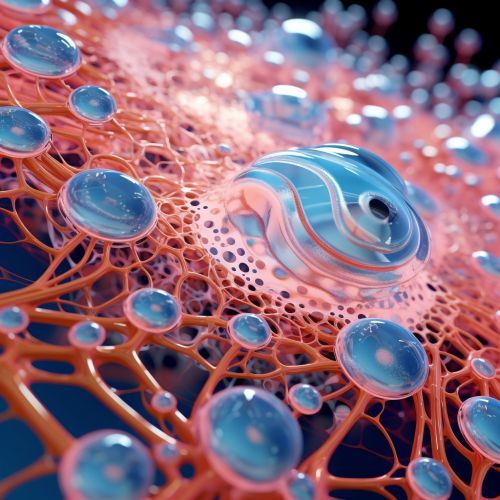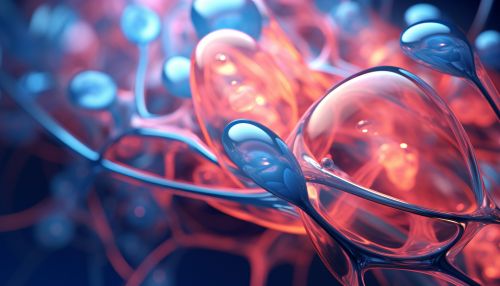Bioorthogonal Reactions in Cellular Systems
Introduction
Bioorthogonal reactions are a subset of chemical reactions that can occur inside living systems without interfering with native biochemical processes. The term "bioorthogonal" was coined by Carolyn R. Bertozzi, a chemist at the University of California, Berkeley, and refers to reactions that are "orthogonal" or independent of biological reactions. This unique property makes bioorthogonal reactions invaluable tools in chemical biology, allowing researchers to label and manipulate biomolecules within living systems with minimal perturbation of native processes.


Bioorthogonal Chemistry
Bioorthogonal chemistry is a branch of chemistry that focuses on the development and application of bioorthogonal reactions. The goal of bioorthogonal chemistry is to create reactions that are fast, selective, and biocompatible, meaning they can occur in living systems without causing harm. These reactions are typically used to label biomolecules with probes, such as fluorescent dyes or affinity tags, that allow researchers to visualize and track these molecules within cells and organisms.
Criteria for Bioorthogonal Reactions
For a reaction to be considered bioorthogonal, it must meet several criteria. First, the reaction must be selective, meaning it only occurs between the desired reactants and does not interfere with other biological molecules. Second, the reaction must be fast enough to occur within the timescale of biological processes. Third, the reaction must be biocompatible and not produce any toxic byproducts. Finally, the reactants must be stable and nonreactive in the biological environment until the reaction is triggered.
Types of Bioorthogonal Reactions
There are several types of bioorthogonal reactions, each with its own unique set of advantages and limitations. These include the Staudinger ligation, copper-catalyzed azide-alkyne cycloaddition (CuAAC), strain-promoted azide-alkyne cycloaddition (SPAAC), and tetrazine ligation.
Staudinger Ligation
The Staudinger ligation is a bioorthogonal reaction that involves the reaction of an azide with a phosphine to form an amide. This reaction is highly selective and biocompatible, but it is relatively slow compared to other bioorthogonal reactions.
Copper-Catalyzed Azide-Alkyne Cycloaddition (CuAAC)
The copper-catalyzed azide-alkyne cycloaddition (CuAAC) is a bioorthogonal reaction that involves the reaction of an azide with an alkyne in the presence of a copper catalyst to form a triazole. This reaction is highly selective and fast, but the use of a copper catalyst can be toxic to cells.
Strain-Promoted Azide-Alkyne Cycloaddition (SPAAC)
The strain-promoted azide-alkyne cycloaddition (SPAAC) is a bioorthogonal reaction that involves the reaction of an azide with a strained alkyne to form a triazole. This reaction is highly selective and fast, and it does not require a catalyst, making it more biocompatible than CuAAC.
Tetrazine Ligation
The tetrazine ligation is a bioorthogonal reaction that involves the reaction of a tetrazine with a trans-cyclooctene to form a dihydropyridazine. This reaction is highly selective and extremely fast, making it one of the most promising bioorthogonal reactions for use in living systems.
Applications of Bioorthogonal Reactions in Cellular Systems
Bioorthogonal reactions have a wide range of applications in cellular systems, from the study of biomolecule dynamics to the development of new therapeutic strategies.
Biomolecule Labeling
One of the primary applications of bioorthogonal reactions is in the labeling of biomolecules, such as proteins, nucleic acids, and lipids. By attaching a probe to a biomolecule via a bioorthogonal reaction, researchers can visualize and track the biomolecule within a cell or organism.
Drug Delivery
Bioorthogonal reactions can also be used to deliver drugs to specific cells or tissues. By attaching a drug to a biomolecule that is selectively expressed in a certain cell type, researchers can ensure that the drug is delivered to the target cells and not to healthy cells.
Therapeutic Development
Bioorthogonal reactions are also being used in the development of new therapeutic strategies. For example, bioorthogonal reactions can be used to create prodrugs, which are inactive forms of a drug that are activated by a specific bioorthogonal reaction in the target cells.
Future Directions
While bioorthogonal reactions have already proven to be powerful tools in chemical biology, there is still much to learn about these reactions and their potential applications. Future research will likely focus on developing new bioorthogonal reactions that are even faster, more selective, and more biocompatible. Additionally, researchers will continue to explore new applications of bioorthogonal reactions in cellular systems, from the study of biomolecule dynamics to the development of new therapeutic strategies.
